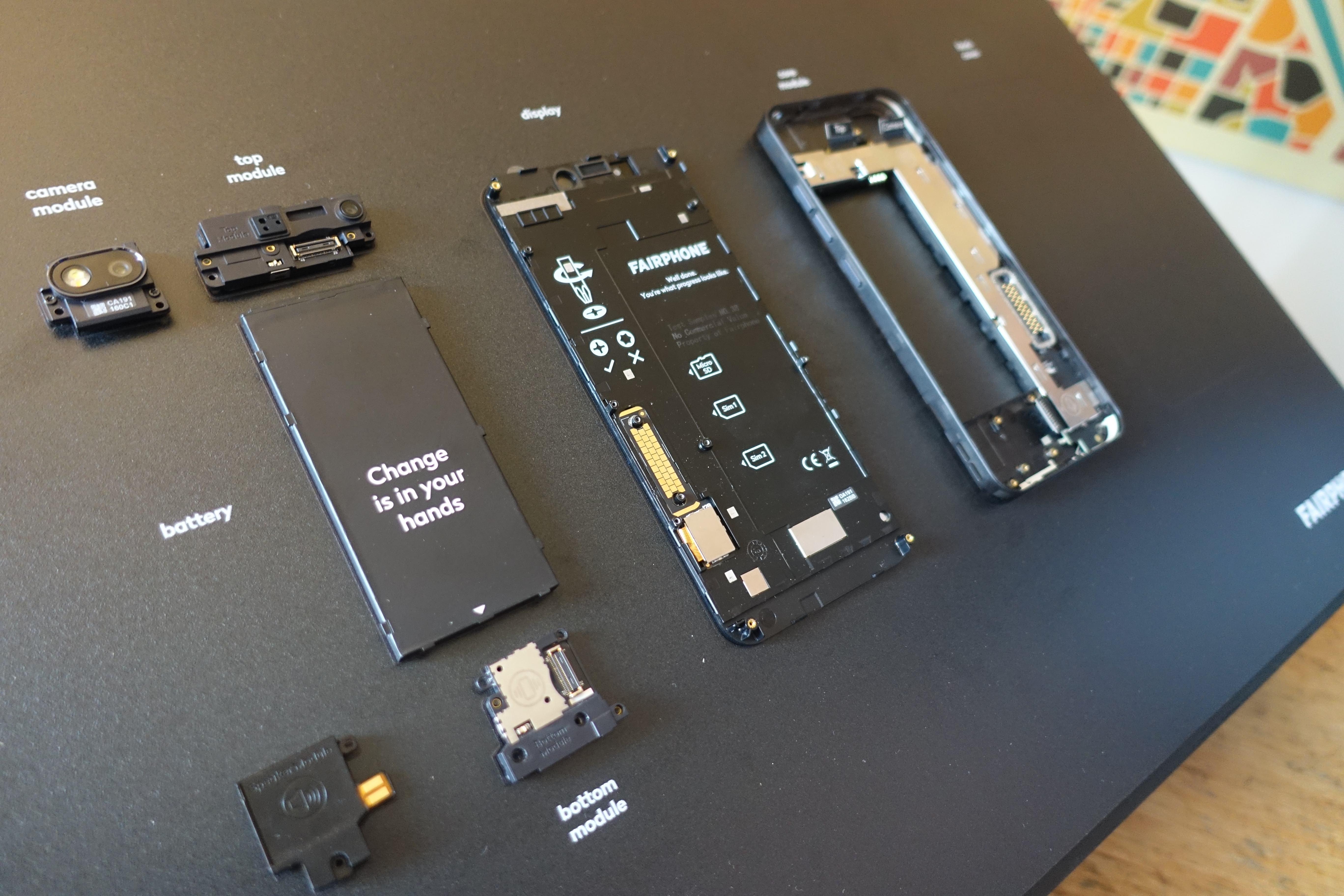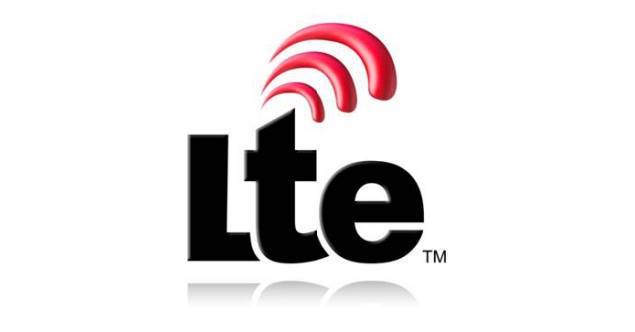|
Fairphone 3
The Fairphone 3 and 3+ are touchscreen-based smartphones made by Fairphone. The phone has a modular, repairable design and is "constructed out of responsibly-sourced, conflict-free, and recycled materials where possible". It went on sale on 3 September 2019. It comes with Android 9 "Pie" installed. The phone has a FullHD+ screen (2160 × 1080 pixels) with Gorilla Glass, 12 MP rear camera, 3,000 mAh battery, 64 GB storage with microSD, Qualcomm Snapdragon 632 processor, 4 GB RAM, 8 MP front camera (16 MP on Fairphone 3+), NFC and dual SIM. At launch the Fairphone 3 retailed at £408. The Fairphone 3+, launched in August 2020, has upgraded front and rear cameras and speaker modules. The camera modules are compatible with the FP3. However, the improved audio primarily comes from the new core module in the FP3+ and is not upgradable as this is IMEI related. The Fairphone 3+ shipped with Android 10 and an increase in the amount of recycled plastic it contains, now 40%. Ethica ... [...More Info...] [...Related Items...] OR: [Wikipedia] [Google] [Baidu] |
Fairphone
Fairphone is a Dutch electronics manufacturer that designs and produces smartphones and headphones. It aims to minimise the ethical and environmental impact of its devices by using recycled, fairtrade and conflict-free materials, maintaining fair labor conditions throughout its workforce and suppliers, and enabling users to easily repair their devices through modular design and by providing replacement parts. , the company's most recent smartphone is the Fairphone 5, which it plans to provide with security updates and software support, including 5 OS updates, for 10 years. Fairphone has been dubbed the most ethical smartphone in the world, scoring 98 out of 100 possible points by the British magazine Ethical Consumer. History Fairphone was founded by Bas van Abel, Tessa Wernink and Miquel Ballester as a social enterprise company in January 2013, having existed as a campaign for two and a half years. In April 2015 the company became a registered B Corporation. ... [...More Info...] [...Related Items...] OR: [Wikipedia] [Google] [Baidu] |
Lithium-ion
A lithium-ion or Li-ion battery is a type of rechargeable battery that uses the reversible Intercalation (chemistry), intercalation of Li+ ions into electronically Electrical conductor, conducting solids to store energy. Li-ion batteries are characterized by higher specific energy, energy density, and Energy efficiency (physics), energy efficiency and a longer cycle life and calendar life than other types of rechargeable batteries. Also noteworthy is a dramatic improvement in lithium-ion battery properties after their market introduction in 1991; over the following 30 years, their volumetric energy density increased threefold while their cost dropped tenfold. In late 2024 global demand passed per year, while production capacity was more than twice that. The invention and commercialization of Li-ion batteries Timeline of historic inventions, has had a large impact on technology, as recognized by the 2019 Nobel Prize in Chemistry. Li-ion batteries have enabled portable consumer ... [...More Info...] [...Related Items...] OR: [Wikipedia] [Google] [Baidu] |
Bluetooth 5
Bluetooth is a short-range wireless technology standard that is used for exchanging data between fixed and mobile devices over short distances and building personal area networks (PANs). In the most widely used mode, transmission power is limited to 2.5 milliwatts, giving it a very short range of up to . It employs UHF radio waves in the ISM bands, from 2.402GHz to 2.48GHz. It is mainly used as an alternative to wired connections to exchange files between nearby portable devices and connect cell phones and music players with wireless headphones, wireless speakers, HIFI systems, car audio and wireless transmission between TVs and soundbars. Bluetooth is managed by the Bluetooth Special Interest Group (SIG), which has more than 35,000 member companies in the areas of telecommunication, computing, networking, and consumer electronics. The IEEE standardized Bluetooth as IEEE 802.15.1 but no longer maintains the standard. The Bluetooth SIG oversees the development of the specifi ... [...More Info...] [...Related Items...] OR: [Wikipedia] [Google] [Baidu] |
Wi-Fi
Wi-Fi () is a family of wireless network protocols based on the IEEE 802.11 family of standards, which are commonly used for Wireless LAN, local area networking of devices and Internet access, allowing nearby digital devices to exchange data by radio waves. These are the most widely used computer networks, used globally in small office/home office, home and small office networks to link devices and to provide Internet access with wireless routers and wireless access points in public places such as coffee shops, restaurants, hotels, libraries, and airports. ''Wi-Fi'' is a trademark of the Wi-Fi Alliance, which restricts the use of the term "''Wi-Fi Certified''" to products that successfully complete Interoperability Solutions for European Public Administrations, interoperability certification testing. Non-compliant hardware is simply referred to as WLAN, and it may or may not work with "''Wi-Fi Certified''" devices. the Wi-Fi Alliance consisted of more than 800 companies from ar ... [...More Info...] [...Related Items...] OR: [Wikipedia] [Google] [Baidu] |
LTE (telecommunication)
In telecommunications, long-term evolution (LTE) is a standard for wireless broadband communication for cellular mobile devices and data terminals. It is considered to be a "transitional" 4G technology, and is therefore also referred to as 3.95G as a step above 3G. LTE is based on the 2G GSM/ EDGE and 3G UMTS/ HSPA standards. It improves on those standards' capacity and speed by using a different radio interface and core network improvements. LTE is the upgrade path for carriers with both GSM/UMTS networks and CDMA2000 networks. LTE has been succeeded by LTE Advanced, which is officially defined as a "true" 4G technology and also named "LTE+". Terminology The standard is developed by the 3GPP (3rd Generation Partnership Project) and is specified in its Release 8 document series, with minor enhancements described in Release 9. LTE is also called 3.95G and has been marketed as 4G LTE and Advanced 4G; but the original version did not meet the technical criteria of a 4G wire ... [...More Info...] [...Related Items...] OR: [Wikipedia] [Google] [Baidu] |
HSPA+
HSPA may refer to: * High Speed Packet Access, a mobile broadband technology * Hawaiian Sugar Planters' Association Education * High School Proficiency Assessment * Humphrey School of Public Affairs, an American public policy school * Hunter School of the Performing Arts, a school in Australia Healthcare * Healthcare Sterile Processing Association {{disambiguation ... [...More Info...] [...Related Items...] OR: [Wikipedia] [Google] [Baidu] |
EDGE (telecommunication)
Enhanced Data rates for GSM Evolution (EDGE), also known as 2.75G and under various other names, is a 2G digital mobile phone technology for packet switching, packet switched data transmission. It is a subset of General Packet Radio Service (GPRS) on the GSM network and improves upon it offering speeds close to 3G technology, hence the name 2.75G. EDGE is standardized by the 3GPP as part of the GSM family and as an upgrade to GPRS. EDGE was deployed on GSM networks beginning in 2003 – initially by Cingular (now AT&T) in the United States. It could be readily deployed on existing GSM and GPRS cellular equipment, making it an easier upgrade for Mobile network operator, cellular companies compared to the UMTS 3G technology that required significant changes. Through the introduction of sophisticated methods of coding and transmitting data, EDGE delivers higher bit-rates per radio channel, resulting in a threefold increase in capacity and performance compared with an ordinary G ... [...More Info...] [...Related Items...] OR: [Wikipedia] [Google] [Baidu] |
GPRS
General Packet Radio Service (GPRS), also called 2.5G, is a mobile data standard on the 2G cellular communication network's Global System for Mobile Communications, global system for mobile communications (GSM). Networks and mobile devices with GPRS started to roll out around the year 2001; it offered, for the first time on GSM networks, seamless data transmission using Packet switching, packet data for an "always-on" connection (eliminating the need to "dial-up"), so providing improved Internet access for World Wide Web, web, email, Wireless Application Protocol, WAP services, Multimedia Messaging Service (MMS) and others. Up until the rollout of GPRS, only circuit switched data was used in cellular networks, meaning that one or more radio channels were occupied for the entire duration of a data connection. On the other hand, on GPRS networks, data is broken into small packets and transmitted through available channels. This increased efficiency also gives it theoretical data ... [...More Info...] [...Related Items...] OR: [Wikipedia] [Google] [Baidu] |
Samsung CMOS
The ISOCELL CMOS camera sensors are a family of sensors produced by Samsung and available for purchase by other companies. They are used in a wide variety of products including mobile phones, computers and digital cameras. Design These sensors use one of the following pixel type technologies: *FSI: frontside-illuminated. The light that reaches the photosensitive area is reduced because it needs to pass through multiple metal and dielectric layers. *BSI: backside-illuminated.The metal wiring shifted to backside of photosensitive area(photodiode). The light reaches the photosensitive area directly. *ISOCELL: ISOCELL combines 3D-BSI with Front-side, Full-depth, Deep-Trench Isolation (F-DTI) and Vertical Transfer Gate (VTG). This provides increased light sensitivity and higher color fidelity even in poor lighting conditions. *ISOCELL Plus: ISOCELL Plus replaces ISOCELL's metal grid barriers with an innovative new material developed by Fujifilm. This minimizes optical loss and ligh ... [...More Info...] [...Related Items...] OR: [Wikipedia] [Google] [Baidu] |
Exmor
Exmor is a technology developed by Sony and implemented on some of their CMOS sensor, CMOS image sensors. It performs on-chip Analog-to-digital converter, analog/digital signal conversion and two-step noise reduction in parallel on each column of the CMOS sensor. Sensors from the Exmor family have become widely available in consumer technology. History In October 2015, Sony Semiconductor Solutions was established as a wholly owned group company to reinforce the CMOS image sensor business and integrate the semiconductor-related business operations of Sony Group. Following the incorporation, all the Exmor sensors are designed and manufactured by the company. On 14 May 2020, the Intelligent vision sensor, Intelligent Vision Sensor was announced with an introduction that reads: "the first image sensor in the world to be equipped with Artificial intelligence, AI processing functionality". The new sensor distinguishes itself from the previous Exmor RS sensors by an AI accelerator, ... [...More Info...] [...Related Items...] OR: [Wikipedia] [Google] [Baidu] |
Pixel
In digital imaging, a pixel (abbreviated px), pel, or picture element is the smallest addressable element in a Raster graphics, raster image, or the smallest addressable element in a dot matrix display device. In most digital display devices, pixels are the smallest element that can be manipulated through software. Each pixel is a Sampling (signal processing), sample of an original image; more samples typically provide more accurate representations of the original. The Intensity (physics), intensity of each pixel is variable. In color imaging systems, a color is typically represented by three or four component intensities such as RGB color model, red, green, and blue, or CMYK color model, cyan, magenta, yellow, and black. In some contexts (such as descriptions of camera sensors), ''pixel'' refers to a single scalar element of a multi-component representation (called a ''photosite'' in the camera sensor context, although ''wikt:sensel, sensel'' is sometimes used), while in yet ... [...More Info...] [...Related Items...] OR: [Wikipedia] [Google] [Baidu] |





